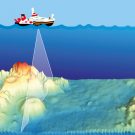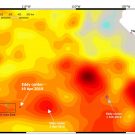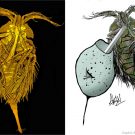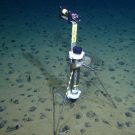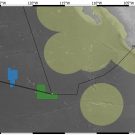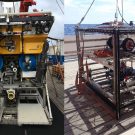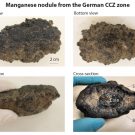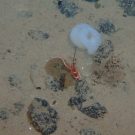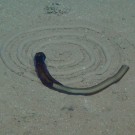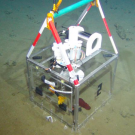(Deutsche Version unten) How do you plan research that is to be conducted at the seafloor in 4000 meter water depth? How do you choose the locations for your studies in a large area that you may not know much about yet? How do you pick the best spot to deploy sensors? – Which path […]
Wer ist eigentlich Eddy?/Who actually is Eddy?
(English version below) Das war eine häufige Frage an Bord zu Beginn unserer Forschungsfahrt. Denn das „Eddy“ Teil unserer wissenschaftlichen Untersuchungen wird, ergab sich relativ kurzfristig. Eddies sind temporäre Wasserwirbel mit einem Durchmesser von mehreren hundert Kilometern, die lange Strecken durch den offenen Ozean zurücklegen können, bevor sie sich irgendwann auflösen. Sie können von der […]
Phantastische Tierwesen und wo sie zu finden sind/Fantastic Beasts and Where to find them
(English version below) Tief, fremd und unbekannt: So wird die Tiefsee häufig beschrieben. Die meisten der Tiere in der dunklen Tiefseeebene 4000 Meter unter unserem Schiff sind bisher unentdeckt und nur wenige wurden wissenschaftlich beschrieben. Hier möchten wir einige der Arten vorstellen, die wir während der Fahrt SO268 bereits entdeckt haben oder von denen wir […]
BOBO and the 7 (+7) dwarfs: How to sense the deep sea
by Sabine Haalboom (NIOZ) The first half of the cruise has passed and we’ve finished the baseline studies in the Belgian license area. Doing my PhD research in marine geology at the Royal Netherlands Institute for Sea Research (NIOZ), my main interest is the particle dynamics in the bottom boundary layer (i.e. the layer close […]
Location, Location, Location
Working areas and sampling sites during cruise SO268 of RV SONNE by Timm Schoening (GEOMAR) and Peter Urban (GEOMAR) RV SONNE cruise SO268-2 followed in the footsteps of the first leg of this expedition – SO268-1. We continue to sample the diverse seafloor in two main working areas within the Clarion-Clipperton-Zone (North-East Pacific). Our scope […]
Glimpsing through the eyes of deep-sea cameras/Ein Blick durch die Linse von Tiefsee-Kameras
– The Ocean Floor Observation System (OFOS) and Remotely Operated Vehicle (ROV) – (deutscher Text siehe unten) Many samples that marine biologists gather during research cruises are taken “physically”, such as deep-sea mud that is heaved up from the seafloor onto the deck via different coring gears, and gets further processed in the labs. With […]
Schätze der Tiefsee / Treasures of the Deep
(English below) Manganknollen – Entstehung und wirtschaftliche Relevanz von Jessica Volz, Sophie Paul und Julia M. Otte Während der ersten globalen Forschungsexpedition der HMS Challenger in den 1870er Jahren wurde das große Ressourcenpotential der Tiefsee deutlich. An Bord der HMS Challenger wurden zahlreiche unbekannte marine Organismen sowie mineralische Konkretionen vom pazifischen und atlantischen Meeresboden, die […]
SO268: What’s up on the seabed?
At the bottom of the Ocean, in ~4000m water depth they can be found in high abundances: Manganese nodules. Industry and states are interested in these potato-sized objects as a new metal resource. But before commercial mining will start, the potential ecological impacts need to be investigated. Therefore, the project MiningImpact (funded through JPI Oceans) […]
Traces of life
Antje Boetius, Autun Purser, Yann Marcon During this 4-week expedition we have been very busy with studying traces of human activity at depth on scales of centimeters to kilometers. There was so much to be learned from this study site at 4150 m water depth. But it is important to remember that the ploughing […]
CUBEs – Why do we place ‘mini’-houses on the seafloor?
It may not always be easy to see, but the deep seafloor is teeming with life! Microbes and worms live inside the sediment and large sea cucumbers crawl over the sediment. This life will probably be heavily disturbed if the industry gets permission to collect manganese nodules and remove or plough through the top layer […]
